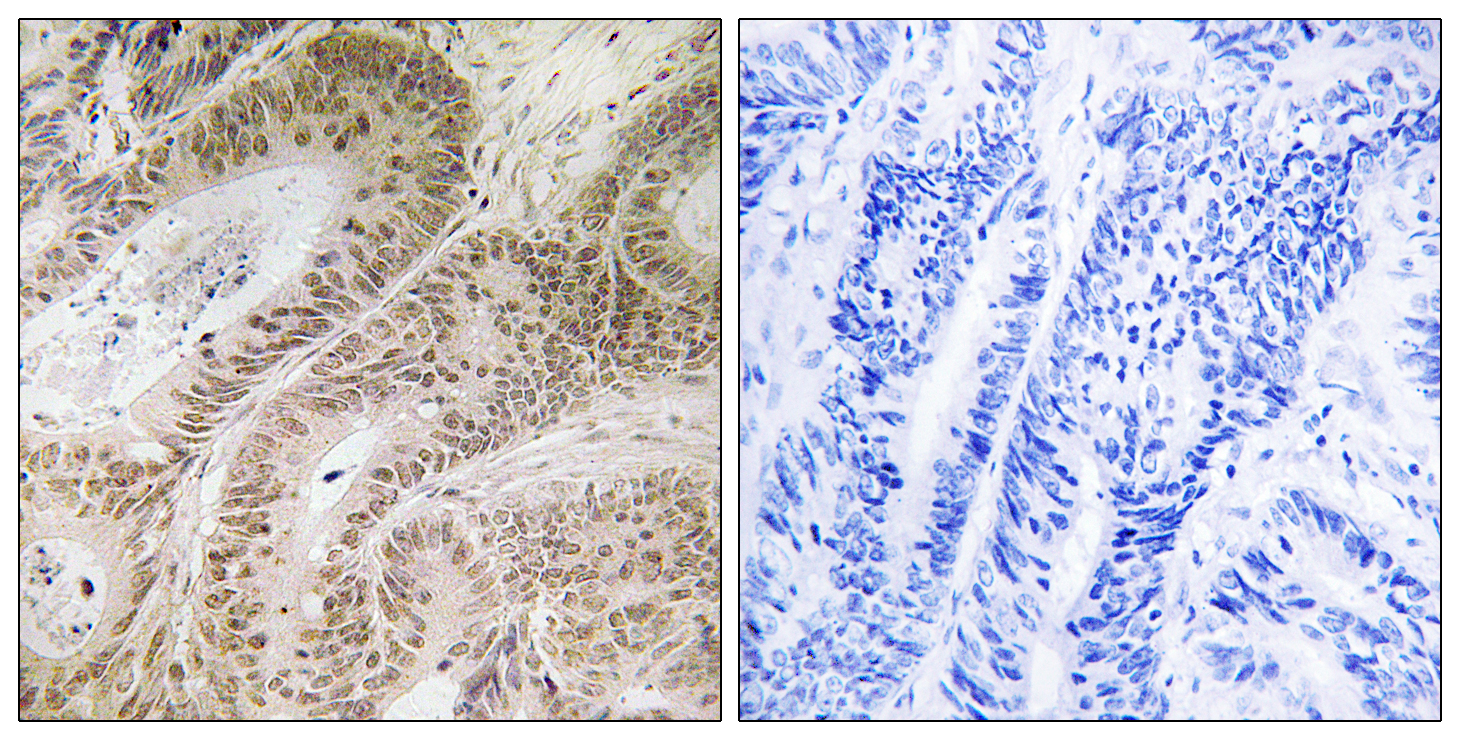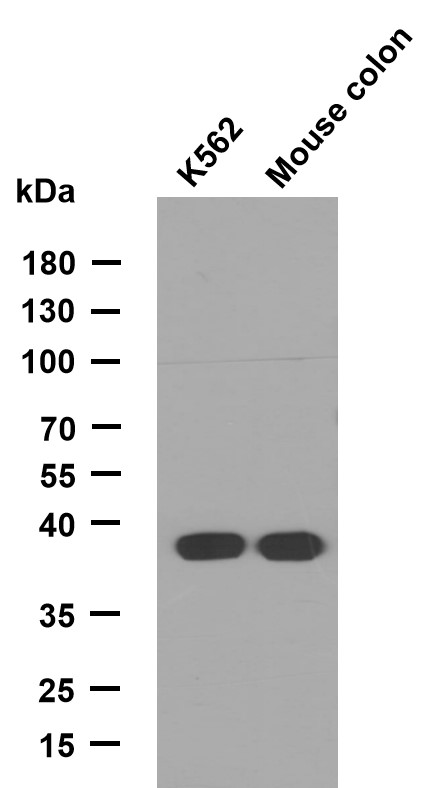RDM1 Polyclonal Antibody
- Catalog No.:YT4034
- Applications:IHC;IF;ELISA
- Reactivity:Human;Mouse
- Target:
- RDM1
- Gene Name:
- RDM1
- Protein Name:
- RAD52 motif-containing protein 1
- Human Gene Id:
- 201299
- Human Swiss Prot No:
- Q8NG50
- Mouse Swiss Prot No:
- Q9CQK3
- Immunogen:
- The antiserum was produced against synthesized peptide derived from human RDM1. AA range:118-167
- Specificity:
- RDM1 Polyclonal Antibody detects endogenous levels of RDM1 protein.
- Formulation:
- Liquid in PBS containing 50% glycerol, 0.5% BSA and 0.02% sodium azide.
- Source:
- Polyclonal, Rabbit,IgG
- Dilution:
- IHC 1:100 - 1:300. ELISA: 1:5000.. IF 1:50-200
- Purification:
- The antibody was affinity-purified from rabbit antiserum by affinity-chromatography using epitope-specific immunogen.
- Concentration:
- 1 mg/ml
- Storage Stability:
- -15°C to -25°C/1 year(Do not lower than -25°C)
- Other Name:
- RDM1;RAD52B;RAD52 motif-containing protein 1;RAD52 homolog B
- Molecular Weight(Da):
- 32kD
- Background:
- This gene encodes a protein involved in the cellular response to cisplatin, a drug commonly used in chemotherapy. The protein encoded by this gene contains two motifs: a motif found in RAD52, a protein that functions in DNA double-strand breaks and homologous recombination, and an RNA recognition motif (RRM) that is not found in RAD52. The RAD52 motif region in RAD52 is important for protein function and may be involved in DNA binding or oligomerization. Alternatively spliced transcript variants encoding different isoforms have been reported. [provided by RefSeq, Jul 2008],
- Function:
- caution:The sequence shown here is derived from an Ensembl automatic analysis pipeline and should be considered as preliminary data.,domain:C-terminal half (amino acids 134-284) contains cytoplasmic retention domains as well as determinants involved in its stress-induced nucleolar accumulation.,function:May confer resistance to the antitumor agent cisplatin. Binds to DNA and RNA.,induction:Heat-shock stress up-regulated mRNA expression of isoform 10 and isoform 11. Heat-shock stress down-regulated short N-terminal mRNA expression of isoform 2, isoform 4, isoform 6 and isoform 9.,similarity:Contains 1 RRM (RNA recognition motif) domain.,subcellular location:Isoform 1 is predominantly cytoplasmic. Isoform 3 and isoform 10 are predominantly nuclear and nucleolar. After treatment with proteasomal inhibitors and mild heat-shock stress, isoform 1, isoform 3, isoform 5, isoform 7, isoform 8 and
- Subcellular Location:
- Nucleus . Cytoplasm . Nucleus, nucleolus . Isoform 3 and isoform 10 are predominantly nuclear and nucleolar. After treatment with proteasomal inhibitors and mild heat-shock stress, isoform 1, isoform 3, isoform 5, isoform 7, isoform 8 and isoform 10 are relocalized to the nucleolus as dot-like or irregular subnuclear structures. Isoform 1 colocalized with nuclear promyelocytic leukemia (PML) and Cajal bodies (CB); this association with nuclear bodies is enhanced in response to proteotoxic stress. Isoform 3, but not isoform 1 and isoform 5, is relocalized in nucleolar caps during transcriptional arrest.; [Isoform 1]: Cytoplasm. Nucleus, PML body. Nucleus, Cajal body. Isoform 1 is predominantly cytoplasmic. Isoform 1 colocalized with nuclear promyelocytic leukemia (PML) and Cajal bodies (CB)
- Expression:
- Expressed in testis.
- June 19-2018
- WESTERN IMMUNOBLOTTING PROTOCOL
- June 19-2018
- IMMUNOHISTOCHEMISTRY-PARAFFIN PROTOCOL
- June 19-2018
- IMMUNOFLUORESCENCE PROTOCOL
- September 08-2020
- FLOW-CYTOMEYRT-PROTOCOL
- May 20-2022
- Cell-Based ELISA│解您多样本WB检测之困扰
- July 13-2018
- CELL-BASED-ELISA-PROTOCOL-FOR-ACETYL-PROTEIN
- July 13-2018
- CELL-BASED-ELISA-PROTOCOL-FOR-PHOSPHO-PROTEIN
- July 13-2018
- Antibody-FAQs
- Products Images

- Immunohistochemistry analysis of paraffin-embedded human colon carcinoma, using RDM1 Antibody. The picture on the right is blocked with the synthesized peptide.



